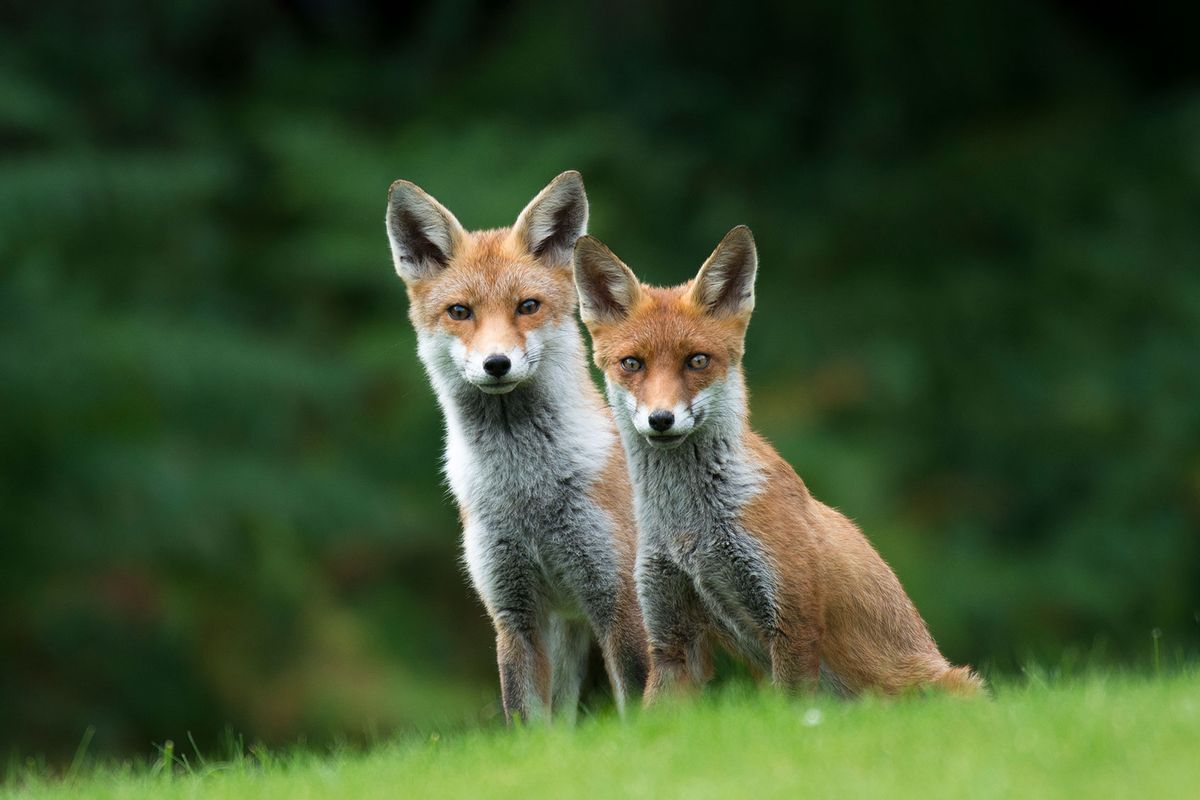From piping plovers to coyotes, eastern bluebirds to mountain lions, urban wildlife takes many forms — differing from other undomesticated wildlife in that such animals have adapted to a life that involves close contact with humans. That proximity sometimes has effects on both sides, creating feedback loops that can be positive or negative. For example, some human activities may encourage the domination of West Nile Virus vectors like house sparrows over other bird species, whereas restoring wetlands can attract more diverse species of birds and insects like dragonflies.
And remarkably, systemic (human) problems like inequality and racism can have outsized impacts on the evolution of urban wildlife as well. The two may seem unrelated, but a growing body of research has made this link apparent. A 2020 study in the journal Science compared racist practices like redlining, a form of residential segregation, to patterns of plants and animals in urban environments.
In more affluent areas, where there are often more green spaces (like parks and community gardens) there is a "luxury effect" in which plants and animals are more diverse compared to poorer neighborhoods. And this can actually influence the evolution of the creatures that live there.
New research published this week in the Proceedings of the National Academy of Sciences (PNAS) found a strong link to a decline in genetic diversity in wildlife that is influenced by systemic racism in human infrastructure. The reason is probably because of "environmental differences" that come to exist between segregated neighborhoods.
"Systemic racism alters the demography of urban wildlife populations in ways that generally limit population sizes and negatively affect their chances of persistence," the authors write. In other words, how we design our urban living spaces is yet another example of environmental racism that is damaging to wildlife as well.
"Residential segregation creates race-based disparities in natural resource availability, land use, pollution, and habitat connectivity, such that neighborhoods that historically excluded minorities tend to be better wildlife habitat," the authors, Dr. Chloé Schmidt and Colin Garroway at the Univeristy of Manitoba in Canada, reported.
Researchers found a pattern of reduced genetic diversity in marginalized neighborhoods that persisted even when adjusting for various outliers.
Part of the reason for this is due to redlining, a U.S. government program that facilitated the growth of the suburbs, but excluded non-white people, forcing them into urban housing projects. The practice was ended in the 1960's, but some of the harms still linger.
"There were many specific government actions that prevented African Americans and whites from living among one another," historian Richard Rothstein wrote in his 2017 book "The Color of Law: A Forgotten History of How Our Government Segregated America," describing "scores of racially explicit laws, regulations, and government practices combined to create a nationwide system of urban ghettos, surrounded by white suburbs."
These dividing lines persist today, but it hadn't typically been linked to the health of urban wildlife. Biodiversity isn't just a nice-to-have thing. It's critical for the health of ecosystems, helping balance clean air and water, but it also promotes food security and even benefits the world economy. Biodiversity is also inherently valuable, meaning it doesn't have to directly benefit humans to be a good thing worth preserving. Some things deserve to exist for the sake of existing.
Genetic diversity is a little different than biodiversity, having more to do with the overall health of a species. Robust genetic diversity helps organisms adapt to a changing environment and prevents inbreeding. So the fact that genetic diversity suffers along racial lines, as demonstrated in the recent PNAS study, is pretty alarming.
Want more health and science stories in your inbox? Subscribe to Salon's weekly newsletter The Vulgar Scientist.
To determine this, Schmidt and Garroway looked at 11 genetic datasets containing almost 8,000 individuals with 39 different species of birds, mammals, amphibians and reptiles. It included moose, red foxes, rough-skinned newts, bobcats, boreal chickadees and much more.
The samples were sourced from nearly 300 urban locations throughout the United States. The researchers compared these sites to demographic data from the 2010 US Census, then correlated it with their genetic samples. They found a pattern of reduced genetic diversity in marginalized neighborhoods that persisted even when adjusting for various outliers.
"It seems likely that the combination of systemic racism and the development of urban landscapes are responsible for the patterns we find," Schmidt and Garroway wrote. "Our results suggest that neighborhoods that are largely non-White support smaller, more fragmented, less genetically diverse wildlife populations."
"The urban landscape is a dynamic product of human choices," they went on. "By actively choosing to develop certain areas, forcing minorities to live in undesirable areas, preferentially investing in greening majority White neighborhoods, or placing industrial facilities near communities of color, systemic racism contributes to the structure of the urban landscape, which in turn shapes wildlife demography in cities."
There's an easy fix: improve the green spaces in poorer, minoritized neighborhoods. Having access to nature is critical in urban spaces. Some studies have linked it to improved physical and mental development of children and the health of adults, but it can also reduce heat and pollution. Today, the majority of people on Earth live in cities, so most interactions with nature occur in urban surroundings. It is critical that we cultivate these areas for all people, regardless of skin color.
Read more
about cities and the environment

Shares